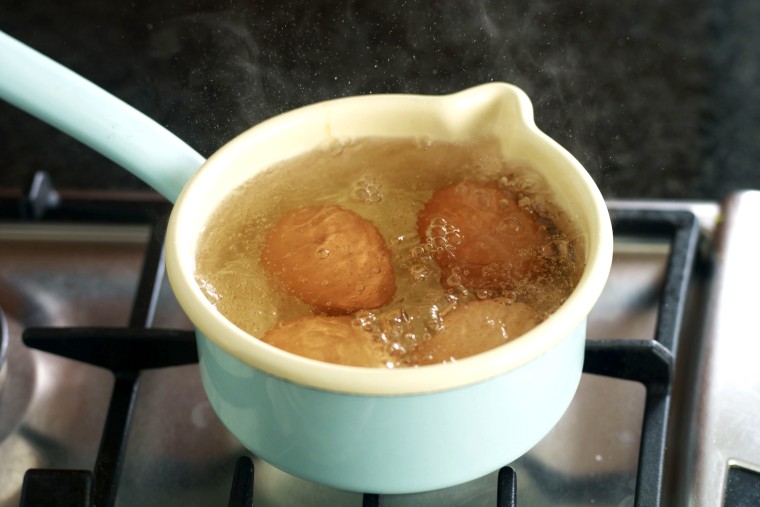Two teams of scientists announced last week that they've figured out how to "unboil an egg." At first glance, the news might seem like frivolous research with no application other than brunch, but it's quite the opposite. While you could use this new technique to turn your hard boiled eggs into scrambled eggs, scientists will be using it to save huge amounts of money and time.
Eggs, specifically egg whites, are made up of proteins. Proteins are essentially long chains of amino acids, which themselves are primarily chains of carbon, hydrogen, oxygen, and nitrogen. But proteins are rarely in the form of a long straight chain of molecules. Instead, they are usually "folded" up in a variety of ways depending on the exact sequence of amino acids that comprise them. You can think of them like a chain of alternating magnets and blocks -- when folded, some magnets will attract, some will repel, and the blocks will just be along for the ride. In reality, the magnets are molecules that are hydrophobic (water-hating) and hydrophilic (water-loving) and the blocks are other molecules that are along for the ride.
Proteins have a natural state based on their lowest energy state. For egg whites, that's the viscous liquid form in a raw egg. Boil that egg however, and the change in temperature alters the strength of the hydrogen bonds in the amino acids. Altering the hydrogen bonds changes the degree to which the magnet segments are attracted or repelled from each other, and thus the protein takes on a new shape. In the case of eggs, that shape is much more compact, so the space between the proteins is smaller and the change in density makes the egg whites go from clear to opaque. That's why a raw egg is clear and a cooked one is white -- the answer is in the density.
Scientists at University of California at Irvine now claim to have a technique for reversing this process in a matter of minutes. Using a "vortex fluid device," they can untangle the proteins and allow them to return to their original state.
Why does this matter? Because a large portion of chemical and biological research is based on proteins (into food, drugs, diseases, etc.) and in the process of this research, a significant fraction of the proteins in use wind up stuck together, stuck to the instruments, stuck to their containers, becoming unusable. This means the samples scientists are working with in the lab get smaller and smaller. Smaller samples mean fewer experiments can be run before needing to reorder more proteins. Add up these losses across the $160 billion dollar industry of recombinant proteins, and the costs are pretty large. While there are methods for untangling currently in use, they are tedious and time consuming (days to weeks). This new method takes minutes, meaning not only can unusable material be made usable again, but more experiments can be run in the same amount of time. It's a win-win.
And if you'd like to purchase your own state of the art vortex fluid device, your breakfast can be a win-win too, no matter how you like your eggs.
For more information, check out this Reddit AMA with the lead scientist.
Here's some geek that I've already unfolded for you:
- Bats actually ring the dinner bell … sort of.
- Polar bears talk to each other through their footprints.
- Ever wish your Legos could come alive? Scientists upload a worm's brain to a Lego robot .[VIDEO]
- If you've got 12 minutes to kill, this Japanese Rube Goldberg compilation is just the thing. [VIDEO]
- Roman scrolls that survived the Mount Vesuvius eruption, might be readable with x-rays.
- How the size and density of trees in California forests change with drought.
- This NOAA animation shows the decline of perennial ice in the Arctic over the last twenty-five years and it's not pretty. [VIDEO]
- The one way sodium is still good for you. Explosions in chemistry class!
- Lose Skymall, save fuel. Here's how.
- Vintage images of snowflakes under a microscope from the late 19th century.
- Test your knowledge of snowflakes in this video of snowflake anatomy. [VIDEO]
- That asteroid that buzzed by Earth last week has its own moon. [GIF]
Keep on geeking! @Summer_Ash
